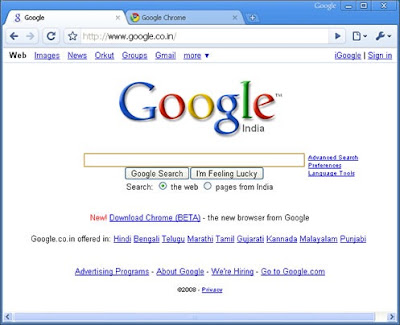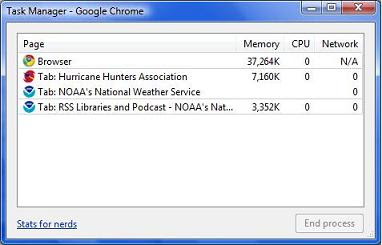- David L. Smith

First found on
March 26, 1999, Melissa shut down Internet mail systems that got clogged with infected e-mails propagating from the virus. Melissa was not originally designed for harm, but it overloaded servers and caused unplanned problems.
Melissa was written by David L. Smith, a 30-year-old man ,in Aberdeen Township, New Jersey, and named after a lap dancer he encountered in Florida.
Melissa can spread on word processors Microsoft Word 97 and Word 2000 and also Microsoft Excel 97, 2000 and 2003. It can mass-mail itself from
e-mail client Microsoft Outlook 97 or Outlook 98.
Punishment:-
Federal Judge Joseph Greenaway sentenced Smith to serve 20 months for releasing the virus, in Federal prison for causing millions of dollars of damage.
- Kevin Mitnick:

Kevin David Mitnick (born August 6, 1963) is a computer security consultant and author. He was a world-famous controversial computer hacker in the late 20th century, who was, at the time of his arrest, the most wanted computer criminal in United States history.
Mitnick gained unauthorized access to his first computer network in 1979, at the age of sixteen, when a friend gave him the phone number for the Ark, the computer system Digital Equipment
Corporation (DEC) used for developing their RSTS/E operating system software. He broke into DEC's computer network and copied DEC's software, a crime he was charged and convicted for in 1988. He was sentenced to twelve months in prison followed by a three year period of supervised release.
Near the end of his supervised release, Mitnick hacked into Pacific Bell voice mail computers. Mitnick fled after a warrant was issued for his arrest, becoming a fugitive for the next two and a half years.
In 1999, Mitnick confessed to four counts of wire fraud, two counts of computer fraud and one count of illegally intercepting a wire communication, as part of a plea agreement before the United States District Court for the Central District of California in Los Angeles. He was sentenced to 46 months in prison in addition to 22 months for violating the terms of his 1989 supervised release sentence for computer fraud.
According to the
U.S. Department of Justice, Mitnick gained unauthorized access to dozens of computer networks while he was a fugitive. He used cloned cellular phones to hide his location and, among other things, copied valuable proprietary software from some of the country’s largest cellular telephone and computer companies. Mitnick also intercepted and stole computer passwords, altered computer networks, and broke into and read private e-mail.
He also wrote a book
The Art of Deception, In his book, Mitnick states that he compromised computers solely by using passwords and codes that he gained by social engineering. He claims he did not use software programs or hacking tools for cracking passwords or otherwise exploiting computer or phone security.
To Download "The Art of Deception" click
here
- Robert Tappan Morris

born November 8, 1965), is an associate professor at Massachusetts Institute of Technology, in the Institute's department of Electrical Engineering and Computer Science. He is best known for creating the Morris Worm in 1988, considered the first computer worm on the Internet.
However, Morris believed that some administrators might try to defeat his worm by instructing the computer to report a false positive.
"I've met Robert. He's a nice guy, and he's a really brilliant professor," says Eric Allman, chief science officer at Sendmail and author of the send mail Internet e-mail routing software that Morris exploited with his worm. "He tries to keep a low profile. I do feel kind of sorry for the guy."
Punishment:
Ultimately, Morris was sentenced to three years of probation, ordered to pay a $10,000 fine and to perform 400 hours of community service for his violation of the federal Computer Fraud and Abuse Act of 1986.
- Albert Gonzalez

28-year-old Miami man who made millions breaking into computer networks and stealing credit card numbers pleaded guilty on Friday and agreed to forfeit more than $2.7 million in restitution, as well as a condo, jewelry, and a car.
Albert Gonzalez, a former federal government informant and the alleged ringleader of one of the largest known identity theft cases in U.S. history, pleaded guilty (as expected) to 19 counts of conspiracy, computer fraud, wire fraud, access device fraud, and aggravated identity theft related to theft of credit and debit card data from TJX Companies (owner of T.J. Maxx), BJ's Wholesale Club, OfficeMax, Boston Market, Barnes & Noble, Sports Authority, among other retailers.
Gonzalez, along with 10 others from the U.S., Eastern Europe, and China, were accused in August 2008 of breaking into retail credit card payment systems using wardriving (searching for unsecured wireless networks while driving by with a laptop), and installing sniffer programs to capture data.
He also pleaded guilty to one count of conspiracy to commit wire fraud related to hacks into the network of the Dave & Buster's restaurant chain. He was indicted on that charge in New York in May 2008.
Gonzalez still faces charges in New Jersey of conspiring to steal credit card numbers from Heartland Payment Systems, 7-Eleven, and supermarket chain Hannaford Brothers following an indictment handed down against him and two unnamed Russians
last month.
Punishment:
Under the terms of the plea agreements, Gonzalez faces up to 25 years in prison for the Boston charges and up to 20 years on the New York charges and will serve the terms concurrently. He also faces fines of at least $500,000.
- Ehud Tenenbaum
 :
:
Ehud Tenenbaum (born August 29, 1979) also known as The Analyzer, is an Israeli
Cracker from Hod HaSharon, Israel.
Tenenbaum became known in 1998 at the age of 19 when he was caught by the FBI
identified as the leader of a gang that hacked into computer systems belonging to the Pentagon, NASA, the U.S. Air Force and Navy, the Israeli Parliament, the Presidency, Hamas, the MIT, as well as other U.S. and Israeli universities.
His
White hat hacker status didn't last long as in September 2008 Tenenbaum was arrested by the Canadian police in Montreal and was charged with six counts of Credit card fraud, in the sum of approx. US$1.5 milion dollars.
Punishment:
Tenenbaum received one year of probation, a two-year suspended prison sentence which would be enforced if he committed another computer crime within three years and a $18,000 fine
The worm blaster was first noticed and started spreading on
August 11, 2003. According to court papers, the original Blaster was created after a Chinese hacking collective called Xfocus

Like the original Blaster, his worm was designed to launch an attack on a Microsoft Web site that housed patches to fix flaws in software. The idea was that if enough computers could be accessed and commanded to flood the Web site, it would collapse under the traffic load.
The worm contains two messages hidden in strings. The first:
I just want to say LOVE YOU SAN!!
That why the worm is sometimes called the Lovesan worm. The second:
billy gates why do you make this possible ? Stop making money
and fix your software!!
This show that that boy was in love with a girl.That's called Intense
Love. The worm also creates the following registry entry so that it is launched every time Windows starts.
HKEY_LOCAL_MACHINE\SOFTWARE\Microsoft\Windows\CurrentVersion\Run\windows auto update = msblast.exe
Punishments:
A federal judge gave Jeffrey Lee Parson the minimum sentence of 18 months in prison today for releasing a version of the Blaster computer worm into the Internet in 2003.







 Introduction:
Introduction:




 First of all we will talk about what are keyloggers, why they are programmed and at last a how to defeat them.
First of all we will talk about what are keyloggers, why they are programmed and at last a how to defeat them.